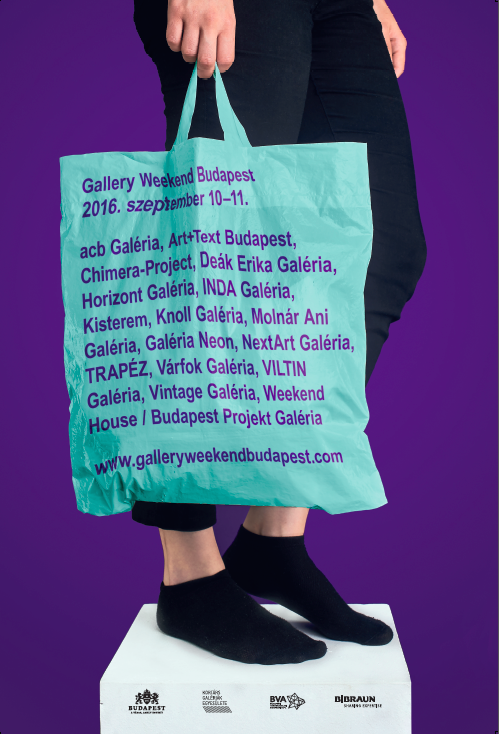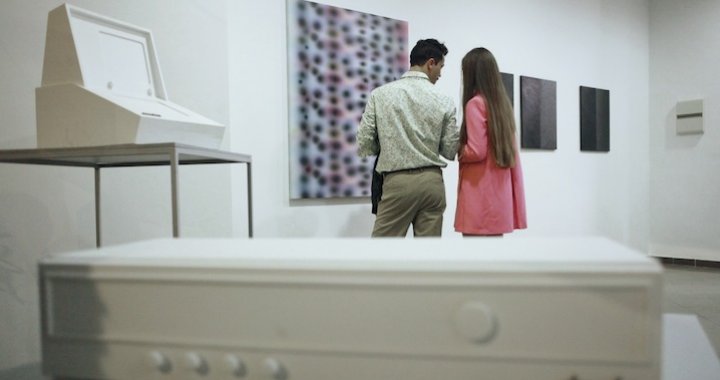
GWB - not a mammoth, but a small & sexy contemporary art event
Q&A with Gábor Rieder, art director of Gallery Weekend Budapest (GWB 2016)
15/08/2016
With heightened interest in the Eastern European art market, which has been tenaciously fortifying its position on the global art scene since the 1990s, continues to follow and study the historical paths of these local markets – how their rises and falls correlate with national political processes, as well as where they happen to stand at the current moment.
It was with these objectives in mind that headed to Poland in early summer, where we delved into the local gallery scene. This autumn, however, we’re going to Hungary; specifically, to the capital city of Budapest, which will be holding the third annual Gallery Weekend Budapest (GWB 2016) from 10-11 September. Sixteen of the city’s galleries will be participating, all of which were carefully selected by Gábor Rieder, the art director of Gallery Weekend Budapest. Over the last fifteen years, Rieder has been actively working as a critic, curator and editor on the local art scene.
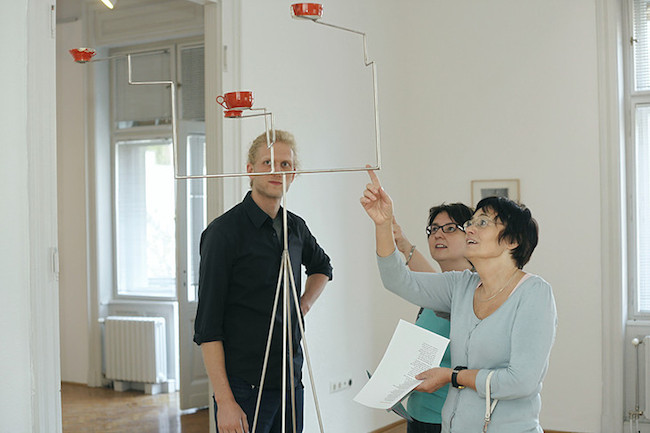
Gallery Weekend Budapest 2015
How does this event differ from other similar events around the world? Which of these other Gallery Weekend-type of events do you admire most?
When we founded GWB in 2014, we didn't want to invent some totally new kind of event to shake up the (art) world, but to follow an existing, effective and fashionable scheme. Based on the “Berliner prototype”, the gallery weekend genre is a prosperous art meeting event in cities with a strong gallery scene. The gallery weekend genre is not a specific, unique genre, but a two-day-long, sharply focused event for the for-profit contemporary galleries in the event-driven globalized art industry. It’s noteworthy that art fairs and biennials dominate the art world nowadays as trendsetting, flagship, giant projects. Gallery weekends attempt to adopt the successful ideas of the leading giant projects in an economical way.
Traditionally, the goals of these kinds of events are to make the galleries more “people-friendly”, and to attract the interest of collectors. Are these your goals as well? Do you have other objectives, too?
Every gallery weekend has a double mission: attracting more visitors and attracting more collectors. In semi-marginal Eastern European countries like Hungary, fine art isn't the focus of the cultural agenda. Our goal is to open the eyes of the wider audience to the hidden value of contemporary visual art. This is the festival-like face of the GWB. Although honestly, the GWB is Janus-faced, and the other one – the less public and less visible face, dedicated to both active and wannabe collectors – is more stimulating for me as art director. We set up a high-profile VIP program for international collectors and experts with studio visits, curator talks, guided tours, parties, etc.
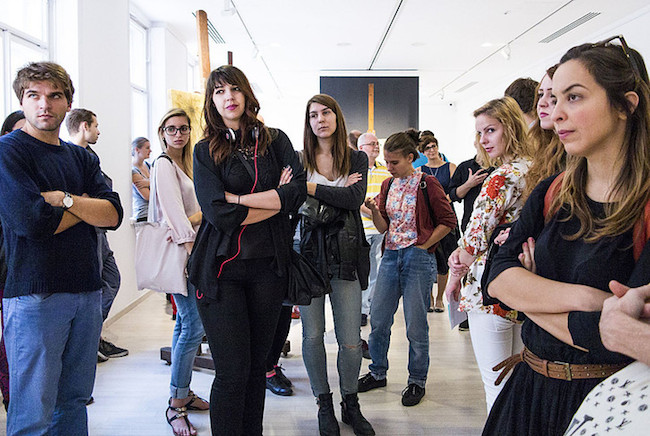
Gallery Weekend Budapest 2015
How many galleries are there on the Budapest gallery scene? How do you select which galleries to invite to participate in GWB?
Sixteen galleries form the scene, plus our main venue, the Budapest Project Gallery, which is run by the municipality as a project center called Weekend House during the GWB. As an active Budapest-based critic, editor and curator for the past 15 years, I am in a very friendly and complex relationship with all of the Hungarian gallerists. I know their attitudes, profiles, personal histories, trajectories, artist stables, international achievements, and even their secret imperfections. I selected the best for GWB (while cooperating with their association), from the internationally recognized and established galleries, to the not-exactly-”A-level” art-fair-goers, but still-good galleries, also including some promising young newcomers. Of course, it would not be wise to disclose which gallery is in which category, as we intend to maintain good relations with all of them.
Do galleries prepare special shows for GWB, or is this more of an opportunity to see how a gallery operates on a daily basis?
I believe in the existing Budapest gallery scene, and I do not want to force the best representatives of them to make something different. They show how they operate on a daily basis, although I do coordinate their extra programs: opening parties, guided tours, performances, etc.
What does GWB’s financial platform consist of?
We established the Creative Platform Contemporary Art Foundation in 2014, and in half a year we managed to set up an event on an incredible small budget – thanks to our corporate sponsor B.braun. We had a few thousand visitors in the first year, which we then doubled the following year. The city of Budapest started to support us last year, which is important for such a city-based event. The total budget has increased to approx. 6,000-7,000 EUR in 2016. Roughly one-fourth comes from a corporate sponsor (B.braun), one-fourth from the Association of Hungarian Contemporary Galleries, and half of the budget comes from the City of Budapest.
Still, we always keep in mind that GWB is not a mammoth, but a small and sexy contemporary art event. Creative energy, an efficient strategy, cutting-edge art – no big campaign, no waste of money. This is how we do business.
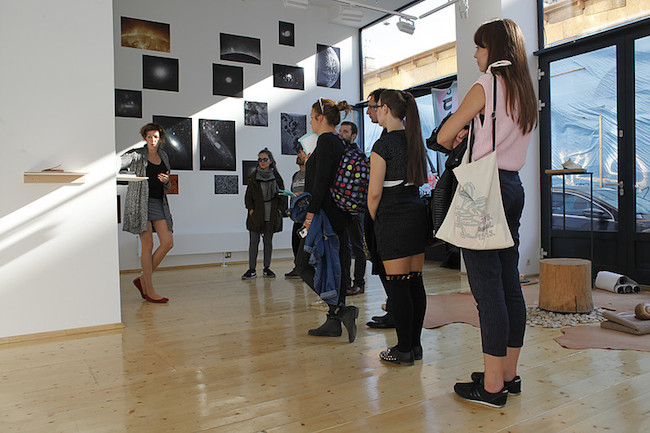
Gallery Weekend Budapest 2015
What role do commercial galleries play on the Hungarian art scene as a whole?
They have played an important role and their role is becoming more and more important. Among the Eastern European capital cities, the art market in Budapest was unique. Dealers (who were mainly performing their activities in the gray zone) had strong positions even in the 80s, then the 90s were dominated by auction houses witnessing the blooming of the old masters and modern art, and then that was followed by the boom of contemporary galleries – roughly around the turn of the millennium. Although the crisis struck the gallery scene very heavily in 2008, leading to the traditionalist and ultra-conservative governmental art body to occupy the best art institutions after 2010, the local gallery scene became something like a “shelter” – the new institutional framework for progressive Hungarian art.
Which world-level art fairs do Budapest’s art galleries participate in, and which ones would you say have been the most fruitful?
As there was an existing, local art market in Budapest, Hungarian progressive galleries were not forced to go international. Although a few of them did A-level art fairs (Art Basel, Liste, FIAC, Frieze etc.) in the last decade, unfortunately, Budapest is currently less represented in the elite club of the art industry as compared to their colleagues in Warsaw, Cluj, Bucharest or Prague.
How would you assess the positions of Budapest’s art galleries in the world art market?
The real moment of Hungarian contemporary art was the early 90s – when, unfortunately, the international art market collapsed. After the harsh boom of Russian art, the last few years have seen a rise in Polish and Romanian art. The Hungarian local art scene always focused on the academic/theoretical part of the art world, and thereby lost the chance to be a player in the “big game” of the international art market. Having a show by the fantastic Dóra Maurer at White Cube is a crown jewel resulting from much effort; I think this may be the next – the big – moment for Hungarian contemporary art on the international scene.
What’s the state of your local art fairs?
Budapest has always had a local art fair – every year from the early 90s onward (recently re-named as Art Market Budapest), which has shown how strong the local art scene is. But I cannot believe in the art fair genre – the proportionate size of this art fair does not match the status of the current Hungarian art market. It is not powerful enough to attract heavy-weight galleries even from our own region; it just pretends to be as big as the real giants (I don’t mean the absolute largest art fairs, but Vienna Contemporary, which is strong enough to attract galleries from the whole region, attracts good collectors and prominent regional galleries). I think the dimensions of a gallery weekend match the dimensions of Budapest perfectly. It is a matter of genre, since you could do a gallery weekend with 16 good galleries in abundance. Why do you think we started with a gallery weekend and not a small art fair? It is not a matter of money, it is a matter of genre and dimension.
How active would you say are local art collectors?
I have never met a gallerist from the Eastern European region who would answer this question without complaining. I do not want to complain. We frequently dream about the roaring 2000s – how the art market was booming...when it was so easy to sell any contemporary painting in Budapest. That is over. The elites (including art lovers and collectors) have changed, they have been either dethroned or decapitated; but now, the new elites are finding their way towards contemporary art – hopefully, we will build up our international recognition and gain a strong market position. This has already started. I am optimistic.
